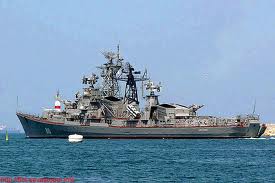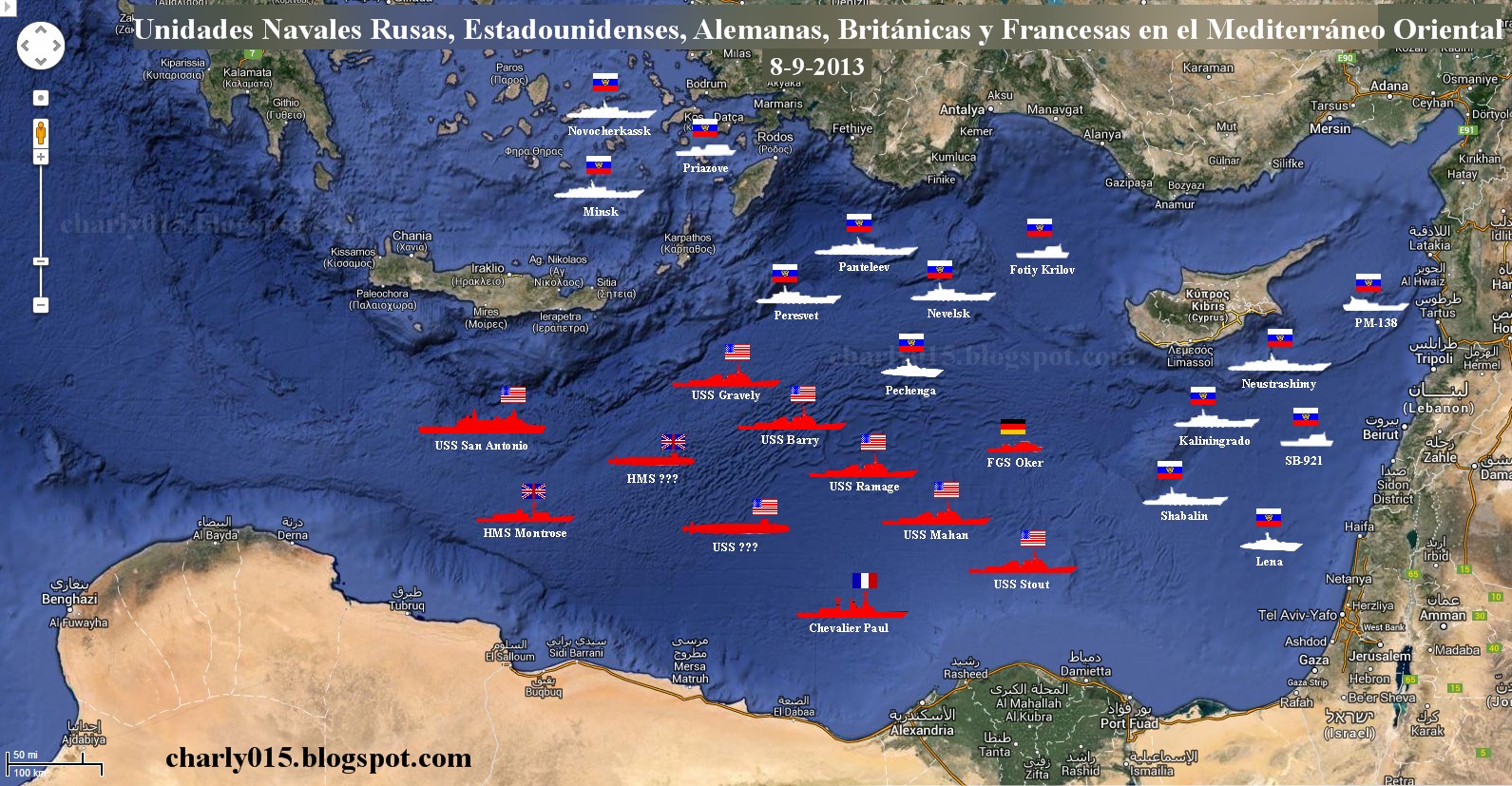 Russia has dispatched a “carrier killer” missile cruiser and other ships to the eastern Mediterranean in its largest naval deployment since Soviet times.
Russia has dispatched a “carrier killer” missile cruiser and other ships to the eastern Mediterranean in its largest naval deployment since Soviet times.
The move comes as the US secretary of state, John Kerry, and his Russian counterpart, Sergey Lavrov, examine Moscow’s plan to place Syrian chemical weapons under international control. Both Russia and the US have been beefing up their naval presence in the Med over the past several weeks.
The destroyer Smetlivy left a naval base in Sevastopol, Ukraine, on Tuesday on a mission to the Syrian coast, a military source told the state news agency Interfax on Thursday.
The source said the Smetlivy would travel to the Mediterranean with the amphibious assault ship Nikolai Filchenkov, which left Novorossiysk on Monday carrying unidentified supplies for the Damascus government.
The missile cruiser Moskva, the flagship of Russia’s Black Sea fleet, is also on its way to the Syrian coast to lead the Russian force there. The ship is reportedly known as a “carrier-killer” because it is outfitted with Vulkan missiles, that are designed to destroy large ships.
Observers have speculated that the buildup is in preparation for an evacuation of Russian citizens in Syria or even to repel a possible US attack against the Assad regime. According to a scientist working on military research, who asked not to be named, the deployment will put Russia in a position to evacuate its citizens currently in Syria and serve as a deterrent against military actions by Turkey and other players in the region.
“The demonstration of strength, the demonstration of the flag, is an additional argument for Russia to be seen as important player,” they said. However, the Russian fleet will not be able to stop an American missile or aircraft strike against Syria, they added
Ruslan Pukhov, the director of the Centre for Analysis of Strategies and Technologies, said that the Mediterranean force is part the biggest deployment of Russian ships worldwide in the post-Soviet era. However, Pukhov denied that the concentration of ships in the eastern Mediterranean was a direct reaction to the growing tensions over the Syrian conflict.
“The rest of the Russian navy is now exercising all over the globe, including a visit to Australia, and all of these were planned months before and are not a reaction to events in Syria … in the past two months,” Pukhov said.
 In recent months, Russian ships have also conducted training exercises in the Barents Sea and in the Pacific Ocean near Kamchatka. At the end of August, it was reported that the missile cruiser Varyag and two other ships were preparing to set out for the south Pacific to make the Russian navy’s first-ever visit to Sydney and to conduct joint exercises with the Australian navy.
In recent months, Russian ships have also conducted training exercises in the Barents Sea and in the Pacific Ocean near Kamchatka. At the end of August, it was reported that the missile cruiser Varyag and two other ships were preparing to set out for the south Pacific to make the Russian navy’s first-ever visit to Sydney and to conduct joint exercises with the Australian navy.
Moscow dispatched ships to the Med starting in late August, but officials have maintained that the deployments are routine and not part of a naval buildup. The size of the fleet there has nonetheless increased: Russian forces in the Med will grow to 11 ships by mid September, the newspaper RBC Daily reported.
The US navy deployed an additional destroyer – its fifth – to the eastern Mediterranean at the end of August. The force could launch Tomahawk missiles at targets in Syria if Barack Obama orders an attack.
Retired admiral Vladimir Komoyedov, chairman of the defence committee of the state Duma and the former commander of the Black Sea fleet, told RBC Daily that the increased Russian presence is a demonstration of force that will nonetheless not be able to match US strength in the eastern Mediterranean.
“The fact that we’re building up our forces on the Syrian coast is the normal reaction of a government whose interests there are being interfered with,” Komoyedov said. “But unfortunately, the force we’ve assembled there is made up of pretty aged ships built 30 years ago. To compete with the United States, we need a fresh horse.”
Guardian
Leave a Reply
You must be logged in to post a comment.